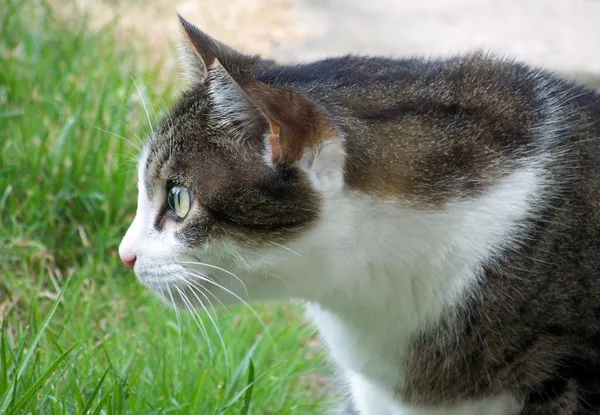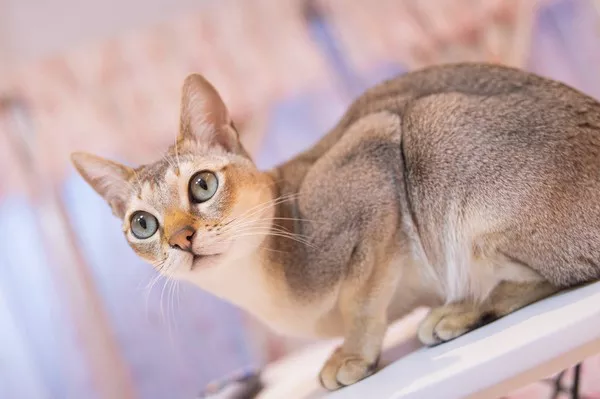Siamese cats, with their striking blue eyes, sleek bodies, and vocal personalities, are a beloved breed among cat enthusiasts. Ensuring they receive the right nutrition is crucial for their health, longevity, and overall well-being. This article delves into the best dietary choices for Siamese cats, considering their unique needs, dietary requirements, and potential health concerns.
Understanding the Nutritional Needs of Siamese Cats
Basic Nutritional Requirements
All cats, including Siamese, are obligate carnivores. This means their diet must primarily consist of animal-based proteins. Essential nutrients for Siamese cats include:
Protein: Crucial for muscle development and repair. It should come from high-quality animal sources.
Fats: Provide energy and support cell structure. Essential fatty acids like omega-3 and omega-6 are particularly important.
Vitamins and Minerals: Necessary for various bodily functions, including immune system support, bone health, and skin condition.
Water: Adequate hydration is essential to prevent urinary tract issues.
Unique Needs of Siamese Cats
Siamese cats may have specific nutritional needs due to their distinct physiology and common health issues:
Lean Muscle Mass: Siamese cats have a sleek, muscular build that requires a high-protein diet to maintain.
Dental Health: They are prone to dental issues, so a diet that supports oral health is beneficial.
Sensitive Stomachs: Siamese cats can have sensitive digestive systems, making high-quality, easily digestible food important.
Types of Cat Food: Pros and Cons
Dry Food (Kibble)
Pros:
Convenience: Easy to store, measure, and feed.
Dental Benefits: Some formulations help reduce plaque and tartar buildup.
Cons:
Low Moisture Content: Can contribute to dehydration and urinary tract issues if not supplemented with adequate water intake.
Quality Variation: Some dry foods contain fillers and lower-quality protein sources.
Wet Food (Canned)
Pros:
High Moisture Content: Helps keep cats hydrated, supporting urinary tract health.
Palatability: Often more appealing to cats due to its texture and aroma.
Cons:
Cost: Generally more expensive than dry food.
Storage: Requires refrigeration after opening and has a shorter shelf life.
Raw Food
Pros:
Nutrient-Rich: Closely mimics a cat’s natural diet, with high levels of protein and moisture.
Digestibility: Often easier on sensitive stomachs.
Cons:
Preparation and Storage: Requires careful handling to prevent bacterial contamination and needs refrigeration.
Nutritional Balance: Ensuring a balanced diet with raw feeding can be challenging without proper guidance.
Key Ingredients to Look for in Cat Food
When selecting food for a Siamese cat, certain ingredients should be prioritized to meet their nutritional needs effectively.
High-Quality Protein Sources
Chicken, Turkey, Fish, Beef:
Importance: Essential for muscle maintenance and overall health.
Tip: Look for foods where the first ingredient is a named animal protein source.
Healthy Fats
Fish Oil, Chicken Fat, Flaxseed:
Importance: Provide essential fatty acids for skin and coat health, as well as brain function.
Tip: Omega-3 and omega-6 fatty acids should be present in the ingredient list.
Digestible Carbohydrates
Brown Rice, Sweet Potatoes, Oats:
Importance: Provide energy and fiber, aiding digestion.
Tip: Carbohydrates should be limited but present in a form that is easily digestible.
Essential Vitamins and Minerals
Taurine, Vitamin E, Calcium, Phosphorus:
Importance: Support various bodily functions, including vision, heart health, and bone strength.
Tip: Ensure the food is fortified with these essential nutrients.
Top Recommended Cat Food Brands for Siamese Cats
Royal Canin Siamese
Overview: Specifically formulated for Siamese cats, this food addresses their unique needs, focusing on muscle maintenance and oral health.
Key Benefits:
High Protein Content: Supports lean muscle mass.
Kibble Shape: Designed to promote chewing, reducing dental issues.
Digestible Ingredients: Helps with sensitive stomachs.
Hill’s Science Diet Adult
Overview: Known for its high-quality ingredients and balanced nutrition, this brand is suitable for adult cats with various health needs.
Key Benefits:
Controlled Fat Levels: Helps maintain an ideal weight.
Antioxidants: Supports the immune system.
Easily Digestible: Suitable for cats with sensitive digestive systems.
Blue Buffalo Wilderness High Protein Grain-Free
Overview: Grain-free and high in protein, this food mimics a natural feline diet.
Key Benefits:
Real Meat: The first ingredient is always real meat, ensuring high-quality protein.
Grain-Free: Suitable for cats with grain sensitivities.
Omega Fatty Acids: Promotes healthy skin and coat.
Wellness CORE Grain-Free
Overview: A high-protein, grain-free option that provides balanced nutrition with high-quality ingredients.
Key Benefits:
Protein-Rich: Supports muscle health.
Natural Ingredients: Free from fillers and artificial additives.
Added Probiotics: Supports digestive health.
Homemade Diets: Considerations and Recipes
Some cat owners prefer to prepare homemade meals to control the quality and ingredients. However, ensuring a balanced diet is crucial.
Benefits of Homemade Diets
Ingredient Control: Complete control over what goes into your cat’s food.
Customization: Ability to tailor the diet to your cat’s specific needs and preferences.
Challenges
Nutritional Balance: Ensuring all essential nutrients are included can be difficult without proper knowledge.
Time-Consuming: Preparing homemade meals requires significant time and effort.
Sample Homemade Recipe
Chicken and Vegetable Mix:
Ingredients: 1 cup cooked chicken (shredded), 1/4 cup steamed and mashed carrots, 1/4 cup cooked and mashed peas, 1 teaspoon fish oil, and a pinch of taurine supplement.
Instructions: Mix all ingredients thoroughly. Serve fresh or store in the refrigerator for up to three days.
Feeding Guidelines and Tips
Proper feeding practices ensure that your Siamese cat receives the full benefits of their diet.
Portion Control
Overfeeding can lead to obesity, a common issue in indoor cats. Follow the feeding guidelines on the cat food package and adjust based on your cat’s activity level and weight.
Feeding Schedule
Consistency: Feed your cat at the same times each day to establish a routine.
Frequency: Adult Siamese cats typically do well with two meals per day, while kittens may require more frequent feedings.
Hydration
Ensure your cat always has access to fresh water. Consider a cat water fountain to encourage drinking, which is particularly important if they primarily eat dry food.
Common Health Concerns in Siamese Cats and Dietary Solutions
Dental Issues
Siamese cats are prone to dental problems. Feeding dry kibble designed to reduce plaque and regular dental check-ups can help maintain oral health.
Obesity
Maintaining a healthy weight is crucial for Siamese cats. Monitor their diet closely and ensure they get plenty of exercise through play and enrichment activities.
Urinary Tract Issues
High moisture diets, like wet food, can help prevent urinary tract issues by ensuring adequate hydration.
Conclusion
Feeding a Siamese cat requires attention to their unique nutritional needs and health concerns. A diet rich in high-quality protein, healthy fats, and essential vitamins and minerals, along with proper portion control and hydration, will support their overall health and well-being. Whether you choose commercial cat food or a homemade diet, ensuring a balanced and nutritious approach is key to keeping your Siamese cat happy and healthy. Always consult with a veterinarian to tailor the diet to your cat’s specific needs and monitor their health regularly. With the right nutrition, your Siamese cat can enjoy a vibrant, active life for years to come.


























